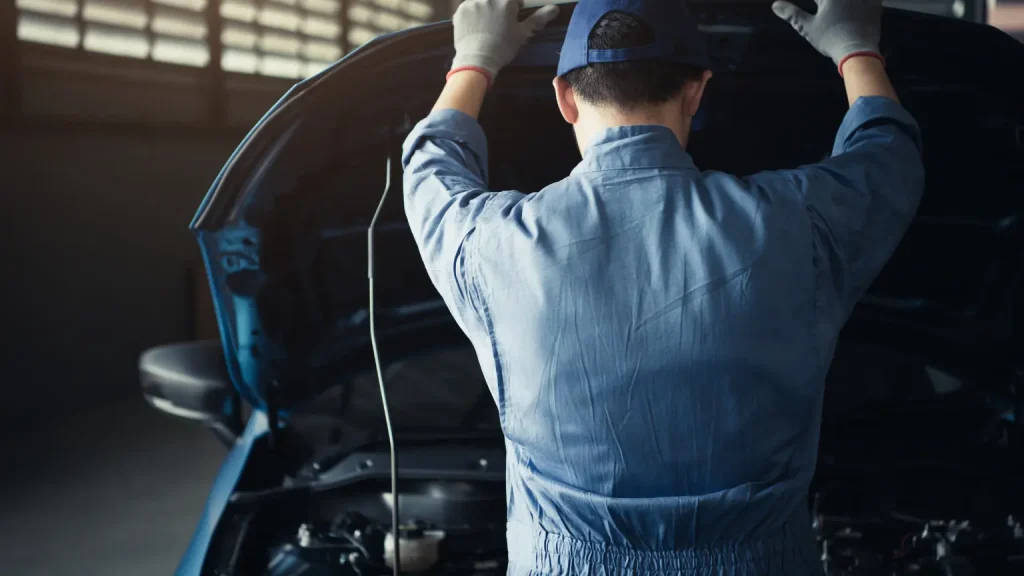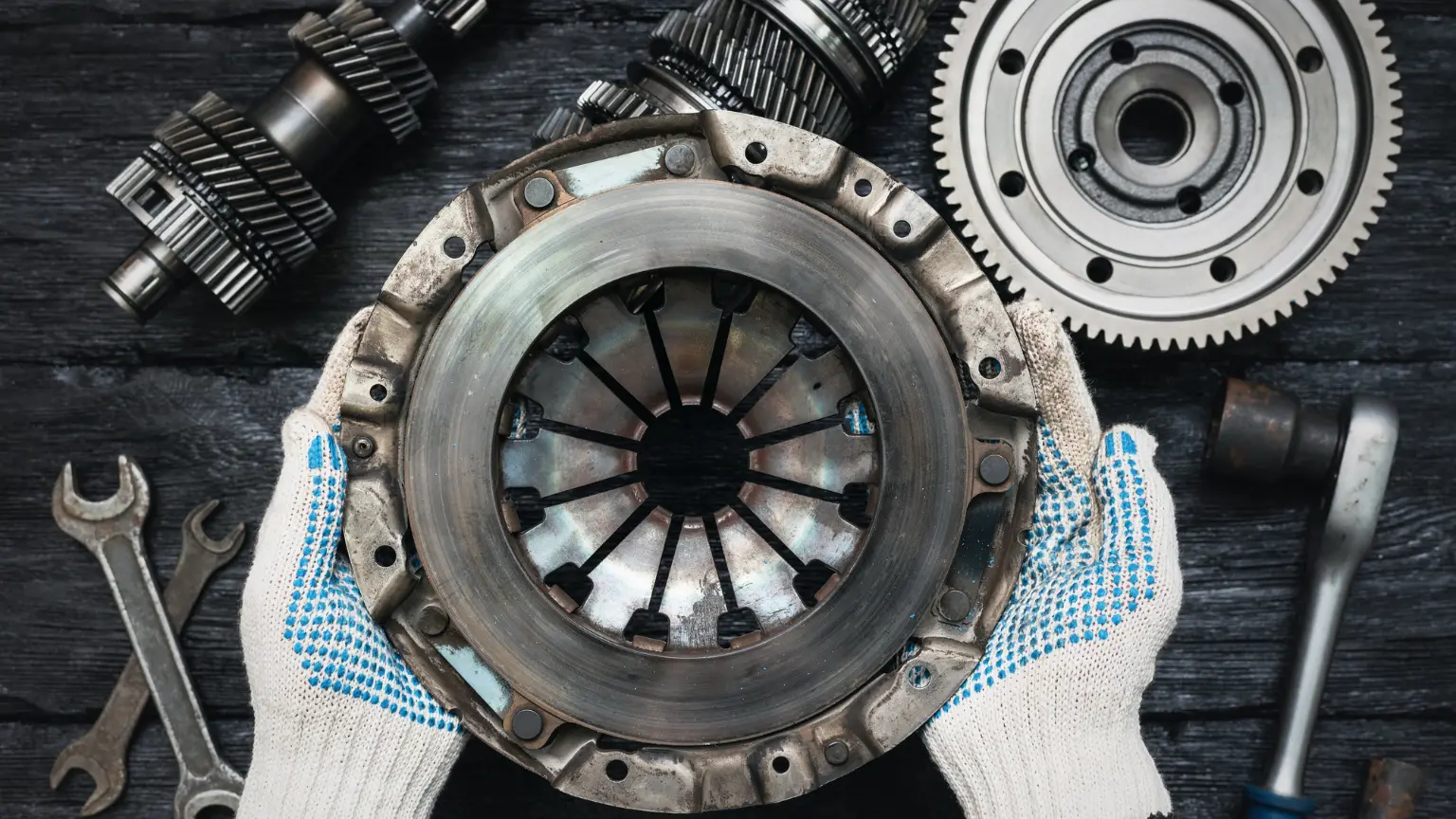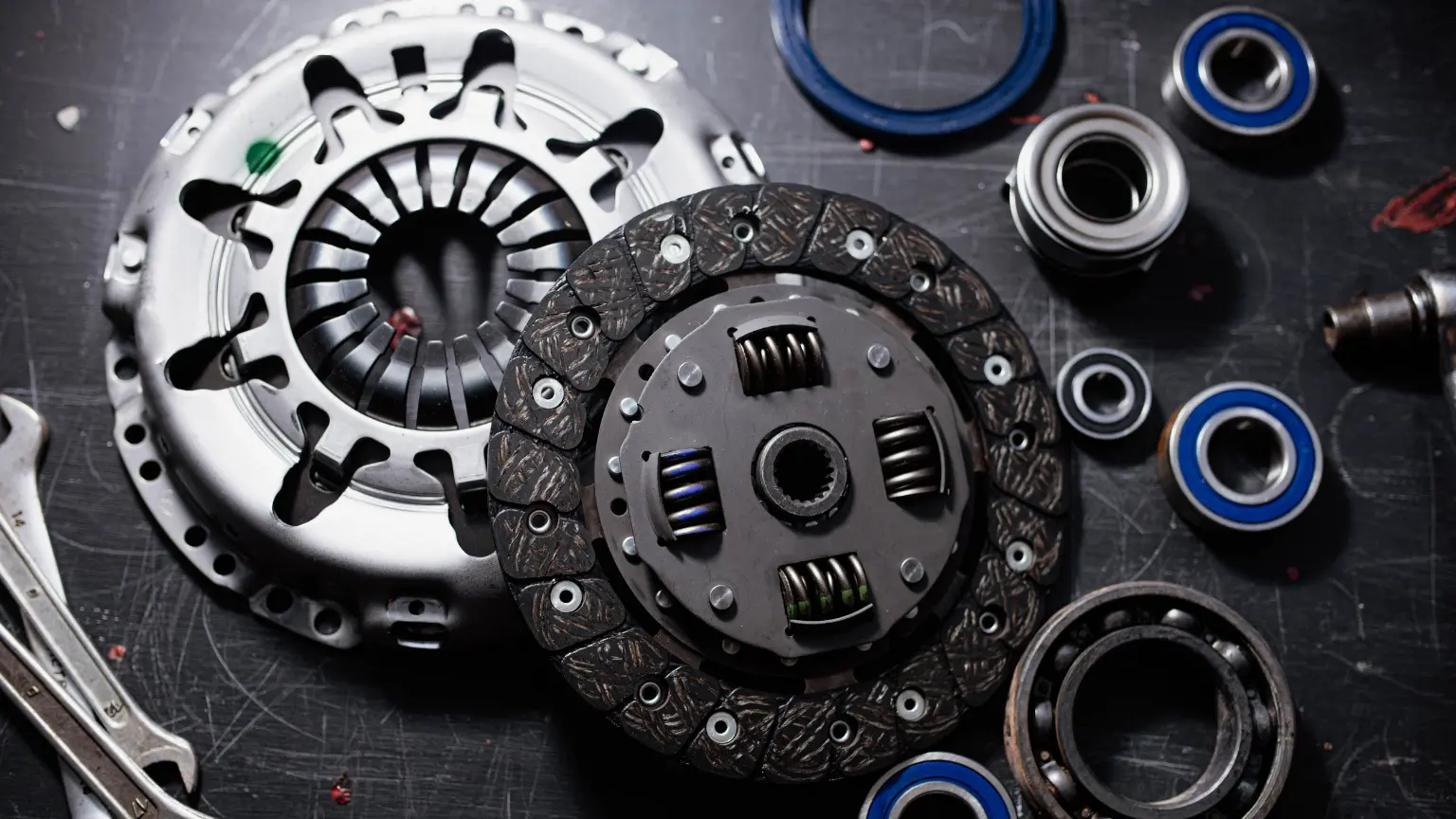Maintain & Extend the Life of Your Transmission: Key Steps Explained
Learn essential transmission maintenance practices—regular fluid changes, cooling system checks, proper fluid selection, and gentle driving habits—to prevent wear, overheating, and costly repairs.

Maintaining the transmission is crucial for ensuring your vehicle lasts as long as possible. It is among the most intricate components of any car, responsible for transferring power from the engine to the drivetrain effectively and smoothly. Without proper maintenance, its lifespan can be significantly shortened, leading to costly transmission repair costs and reduced vehicle performance. By adhering to a few basic maintenance practices, you can help prevent common issues and extend your vehicle’s operational life.
Understanding the Basics of Transmission Maintenance
The Role of Transmission Fluid
Acting as both a lubricant and a coolant, it helps prevent the transmission's internal components from excessive wear and overheating. Over time, however, the fluid can degrade and lose effectiveness, leading to increased friction and elevated temperatures that can harm your transmission. Regularly checking and changing the fluid is a key part of transmission maintenance that cannot be overlooked. This simple step is essential for keeping your transmission in optimal condition and can significantly extend your transmission's life.
Common Causes of Wear and Tear
It can stem from various sources, but common culprits include aggressive driving, inadequate maintenance, and using the wrong transmission fluid type. High heat levels are especially problematic because they accelerate the breakdown of the fluid, increasing wear on internal components. Another factor is infrequent fluid changes, which allow dirt and metal shavings to accumulate within the gearbox, further exacerbating wear. By understanding these common causes, drivers can take proactive steps to mitigate their impact and uphold the health of their transmission.
Automatic and Manual Transmissions
Maintaining a car transmission varies significantly between automatic and manual systems. Automatic transmissions require a specific type of fluid that supports their complex mechanical design and operation. In contrast, manual transmissions generally use various oil, which serves both the gearbox and sometimes the differential. Additionally, manual transmissions are not as susceptible to heat-related damage as automatic ones, but still need regular lubrication to operate smoothly. Recognizing these differences is crucial for effective vehicle transmission care, ensuring each type receives the appropriate maintenance to prevent common issues and extend its lifespan.

Diesel Transmissions
Compared to their gasoline counterparts, diesel gearboxes are subjected to greater torque and stress; therefore, maintaining longevity and performance requires specific maintenance. These transmissions are typically more robust, but the increased load can accelerate wear if not properly managed. Using high-quality fluids capable of withstanding extreme pressures, along with adhering to a stricter maintenance schedule, is essential. Protecting your transmission in a diesel vehicle requires more frequent checks and fluid changes to address the unique demands placed on these systems. Specialized attention helps avoid costly repairs and extends the operational life of the transmission.
Key Steps to Extend the Life of Your Transmission
Replacing Transmission Fluid on a Regular Schedule
Over time, this fluid can degrade and become contaminated with particles that can cause wear and damage. Establishing a routine for checking and replacing this fluid is vital. Most manufacturers recommend replacing transmission fluid every 30,000 to 60,000 miles, though this can vary depending on vehicle usage and operating conditions.
Preventing Overheating with Proper Cooling Measures
Ensuring that your vehicle's cooling system is functioning correctly can prevent such issues. This involves regular checks and maintenance of the radiator and cooling lines. Installing an aftermarket transmission cooler can be a wise investment, especially if you frequently drive in hot weather or tow heavy loads.
Using the Correct Fluid Type for Your Vehicle
Each vehicle manufacturer specifies a particular fluid that is optimized for their transmission design. Using the wrong type of fluid can lead to inefficient operation and damage. It is important to consult your vehicle’s owner manual or a gearbox specialist to ensure the correct fluid is used during replacements. This simple step is a cornerstone of effective car transmission maintenance and helps prevent many common transmission problems.
Avoiding Stressful Driving Habits
Certain driving habits can put undue stress on your transmission, leading to premature wear and the need for costly repairs. Understanding and avoiding these habits can greatly enhance the longevity and reliability of your vehicle's transmission. Here are several practices to avoid:
- Towing Over the Limit: Every car or truck comes with a manufacturer-recommended towing limit designed to safeguard the engine and transmission. Overloading can cause overheating, increased friction, and even catastrophic failure. Regularly ignoring these limits may lead to long-term, costly damage that could have been prevented. If towing is part of your regular activities, consider adding auxiliary cooling systems for your transmission fluid. These measures ensure that your vehicle operates within its intended parameters, reducing strain and improving its overall durability.
- Shifting Gears While Moving: Shifting from drive to reverse or vice versa without coming to a full stop can have a serious impact on your transmission. This habit forces the transmission to compensate for the change in direction rather than allowing the brakes to absorb the energy. Over time, this added stress can lead to gear slippage or permanent damage. While it might save a few seconds, the long-term impact on your vehicle's transmission is far more costly than any time saved. Always come to a complete stop before shifting gears, ensuring smooth transitions and reduced wear on internal components.
- Riding the Brake: Riding the brake is a common mistake, particularly in traffic jams or on hilly roads. This habit creates constant friction and heat, which can lead to overheating not just of the brakes but also of the transmission. Overheated transmission fluid becomes less effective, reducing its ability to cool and lubricate the internal components. Instead of riding the brake, consider using lower gears or relying on your vehicle’s braking system more strategically. This approach minimizes unnecessary stress on your transmission, enhancing both its performance and lifespan.
- Neglecting Regular Maintenance: Routine maintenance is critical to keeping your transmission in good working order. Skipping scheduled servicing can lead to degraded transmission fluid, which becomes contaminated over time with debris and metal shavings. These particles create friction, reduce lubrication, and cause significant internal damage. Following your manufacturer’s service interval recommendations ensures your transmission remains clean, cool, and efficient.
By avoiding these behaviors, you can significantly reduce the risk of transmission failure and extend your vehicle's transmission's lifespan. Proactive care and adherence to manufacturer guidelines go a long way in maintaining a smooth and reliable driving experience.
Use the Parking Brake
Using the parking brake every time you park, especially on inclines, is a simple yet effective way to protect your transmission. When you rely solely on the transmission’s “park” gear, a small component called the parking pawl bears the full weight of your vehicle, which can lead to premature wear or even damage over time. Engaging the parking brake shifts this load away from the transmission, providing extra security and reducing internal stress. Making this a regular habit not only enhances safety but also helps extend the lifespan of your transmission by preventing unnecessary strain on its components.

Tire and Load Considerations
Using properly matched tires is essential for maintaining optimal transmission health. Mismatched or unevenly worn tires can cause the transmission to work harder, leading to increased wear and potential mechanical problems. Ensuring all tires are the correct size and have similar tread depths helps evenly distribute power, reducing unnecessary stress on transmission components. Similarly, avoiding excessive loads is crucial. Overloading your vehicle places additional strain on the transmission, increasing the risk of overheating and premature failure.
Warming Up the Vehicle
Allowing your engine and transmission to warm up before driving, particularly in colder weather, is a simple yet effective practice that helps minimize unnecessary wear and tear. When temperatures drop, transmission fluid thickens and circulates less efficiently, making it harder for internal components to receive the lubrication they need. By letting your vehicle idle for a few minutes after starting, you give the transmission fluid time to reach optimal temperature and flow more freely, ensuring smoother gear engagement and reducing friction on critical parts. This gentle warm-up period is significant in winter, when cold starts can place additional stress on seals, clutches, and gears. For best results, avoid hard acceleration and keep your driving gentle for the first few miles, allowing both the engine and transmission to reach their ideal operating conditions. Consistently following this routine can significantly extend your transmission's lifespan and enhance your vehicle's overall performance.
Identifying Signs of Transmission Trouble
The importance of paying attention to and promptly addressing warning signs, such as unusual noises, slipping, or dashboard alerts related to the transmission.
Unusual Noises and Vibrations
A healthy transmission operates quietly. However, if you begin to hear humming, buzzing, or whining sounds, it's time to pay attention. These sounds may be particularly noticeable when you shift gears or change speeds. Vibrations that seem out of the ordinary also signify that the internal components may be experiencing undue stress or damage.
Delayed or Rough Gear Shifting
If your vehicle begins to exhibit delayed responses or roughness when shifting gears, this is a clear signal that the transmission may be in trouble. Such symptoms suggest that the fluid is either contaminated or at low levels, which hampers the system's ability to transmit power efficiently. It could also indicate a problem with the transmission's bands or clutches. Promptly addressing these symptoms by performing a transmission check can help diagnose the issue accurately.
When to Seek Professional Transmission Services
The Value of Scheduling Regular Inspections and Servicing
Scheduling regular inspections and servicing is essential for maintaining optimal transmission health and preventing costly repairs down the road. Routine check-ups by a qualified technician allow for early detection of wear, leaks, and other developing issues that might otherwise go unnoticed until they cause significant damage. During these inspections, mechanics can assess the condition of the transmission fluid and filter, both of which play pivotal roles in keeping internal components clean and properly lubricated. Over time, filters can become clogged with debris and metal shavings, reducing fluid flow and increasing friction within the system. By replacing the filter and performing a transmission flush at recommended intervals, you help remove contaminants and ensure that fresh, high-quality fluid is circulating throughout the transmission. This proactive approach not only extends the life of your transmission but also helps maintain smooth shifting and reliable performance. Even if your vehicle appears to be running well, annual inspections and timely servicing are crucial for catching minor problems before they escalate into major failures. Investing in regular maintenance safeguards your vehicle’s most complex system, providing peace of mind and supporting the long-term reliability of your car.
The Importance of Transmission Specialists
Unlike general mechanics, who handle a wide range of vehicle repairs, transmission mechanics focus on diagnosing and repairing specific transmission issues. This specialized focus enables them to identify problems that might elude even experienced general technicians. Their training often includes staying updated on advancements in transmission technology, equipping them to handle both traditional systems and newer innovations such as continuously variable transmissions (CVTs) or dual-clutch systems. Transmission repair experts also have access to advanced tools and diagnostic equipment designed for these systems. These tools are critical for identifying issues such as hydraulic system failures, torque converter malfunctions, or solenoid problems, which are often at the root of transmission failures.
Additionally, specialists are trained to use precision techniques, such as pressure testing or fluid analysis, to confirm diagnoses and ensure repairs address the core problem. Their ability to perform complex tasks, like rebuilding or replacing transmissions, sets them apart from general mechanics. This technical edge not only enhances the quality of the repairs but also significantly reduces downtime, ensuring that your vehicle is back on the road faster without sacrificing reliability.
How to Rebuild a Transmission
This process involves disassembling the entire transmission, cleaning all components, and replacing worn or damaged parts. Rebuilding can restore the transmission to optimal working condition and is often recommended for vehicles with high mileage or those that have experienced significant failure. Opting for a rebuild can extend the life of your vehicle significantly, making it a preferred choice for long-term transmission maintenance.
Choosing a Reputable Transmission Shop
The decision shouldn’t be taken lightly, as the skill and reliability of the shop directly affect your vehicle’s performance and your peace of mind. To ensure you’re entrusting your vehicle to capable hands, consider the following factors carefully:
- Certifications and Specializations: A reputable transmission shop should hold certifications such as ASE (Automotive Service Excellence), which validate the expertise of its technicians. Specialized certifications in transmission repair further demonstrate the shop’s commitment to staying updated with the latest industry standards and technologies. Shops with these credentials are more likely to deliver precise and efficient repairs. Additionally, specialization in certain makes or models of vehicles ensures they have the right tools and knowledge for your specific needs. Always verify these credentials, as they signal professionalism and dedication to quality work.
- Experience: The time a shop has been in business speaks volumes about its reliability and expertise. An established shop with years of experience often indicates a strong track record of satisfied customers and successful repairs. Equally important is the shop’s experience with your particular vehicle's make and model. Transmission systems can vary significantly across vehicles, and choosing a shop familiar with your car ensures accurate diagnostics and effective repairs. Don’t hesitate to ask about their history with similar vehicles, as this information can provide valuable insights into their capabilities.
- Warranty Offers: These warranties demonstrate the shop’s confidence in the quality of their services and provide you with added protection. Review the warranty details to understand what is covered, such as parts, labor, and time frames. A comprehensive warranty gives you peace of mind, knowing that the shop will address any post-repair issues without additional costs. Avoid shops that don’t offer warranties, as this could signal a lack of confidence in their work.
- Customer Reviews: Online reviews and testimonials from previous customers are excellent indicators of a shop’s reputation. Look for consistent praise regarding the shop’s professionalism, quality of repairs, and customer service. Negative reviews, especially those highlighting recurring issues, can be a red flag. Additionally, consider seeking recommendations from friends, family, or local forums, as firsthand experiences often provide the most trustworthy insights. A shop with a strong reputation for customer satisfaction is more likely to deliver exceptional service and care for your vehicle.
Taking the time to research and evaluate local transmission shops ensures that your vehicle receives the best possible care. A well-chosen shop not only restores your transmission to optimal performance but also provides the confidence and reassurance that the job was done right. Investing in a reputable provider pays off in both the quality of repairs and the longevity of your vehicle.

Long-Term Strategies for Protecting Your Transmission
Upgrading Components for Durability
This might include installing higher-quality, performance-oriented parts that are designed to withstand tougher conditions and last longer than standard components. Such upgrades are particularly beneficial for vehicles subjected to demanding driving conditions, like frequent towing or off-road use. A proactive approach not only extends the operational life of the transmission but also improves the overall driving experience by ensuring smoother gear shifts and increased reliability.
Following the Manufacturer’s Maintenance Guidelines
These guidelines are designed to optimize the performance and longevity of your vehicle based on extensive research and testing by the manufacturer. They cover everything from fluid change intervals to recommended parts and lubricants. Following these instructions helps ensure the transmission operates within its designed parameters, reducing the risk of premature wear and unexpected failures. Moreover, maintaining a good service record in accordance with these guidelines can enhance your vehicle's resale value, making it a worthwhile investment.
Maintaining your transmission isn’t just about avoiding breakdowns; it’s about enhancing the overall performance and longevity of your vehicle. Through careful monitoring, timely maintenance, and professional care, you can ensure that your transmission remains a reliable component of your vehicle’s system. Protect your vehicle’s longevity and drive with confidence by scheduling expert transmission maintenance and repair at Trans Medic Transmissions. Treat your vehicle’s transmission with the attention it deserves, and it will keep you moving smoothly down the road for many miles to come.
Follow a maintenance program
Ante gravida id aenean quis egestas risus nam amet nullam leo diam diam aliquam eu eu malesuada arcu rhoncus suspendisse nulla mattis ut amet sagittis in justo egestas.

search for a trusted mechanic
Lorem ipsum dolor sit amet, consectetur adipiscing elit lobortis arcu enim urna adipiscing praesent velit viverra sit semper lorem eu cursus vel hendrerit elementum morbi curabitur etiam nibh justo, lorem aliquet donec sed sit mi dignissim at ante massa mattis.
- Neque sodales ut etiam sit amet nisl purus non tellus orci ac auctor
- Adipiscing elit ut aliquam purus sit amet viverra suspendisse potent
- Mauris commodo quis imperdiet massa tincidunt nunc pulvinar
- Excepteur sint occaecat cupidatat non proident sunt in culpa qui officia
Check the air pressure in your tires
Vitae congue eu consequat ac felis placerat vestibulum lectus mauris ultrices cursus sit amet dictum sit amet justo donec enim diam porttitor lacus luctus accumsan tortor posuere praesent tristique magna sit amet purus gravida quis blandit turpis.
Review your suspension frequently
At risus viverra adipiscing at in tellus integer feugiat nisl pretium fusce id velit ut tortor sagittis orci a scelerisque purus semper eget at lectus urna duis convallis. porta nibh venenatis cras sed felis eget neque laoreet suspendisse interdum consectetur libero id faucibus nisl donec pretium vulputate sapien nec sagittis aliquam nunc lobortis mattis aliquam faucibus purus in.
- Neque sodales ut etiam sit amet nisl purus non tellus orci ac auctor
- Adipiscing elit ut aliquam purus sit amet viverra suspendisse potent
- Mauris commodo quis imperdiet massa tincidunt nunc pulvinar
- Excepteur sint occaecat cupidatat non proident sunt in culpa qui officia
Service your vehicle as regularly as posible
At risus viverra adipiscing at in tellus integer feugiat nisl pretium fusce id velit ut tortor sagittis orci a scelerisque purus semper eget at lectus urna duis convallis. porta nibh venenatis cras sed felis eget neque laoreet suspendisse interdum consectetur libero id faucibus nisl donec pretium vulputate sapien nec sagittis aliquam nunc lobortis mattis aliquam faucibus purus in.
“Nisi quis eleifend quam adipiscing vitae aliquet bibendum enim facilisis gravida neque velit euismod in pellentesque”
Conclusion
Eget lorem dolor sed viverra ipsum nunc aliquet bibendum felis donec et odio pellentesque diam volutpat commodo sed egestas aliquam sem fringilla ut morbi tincidunt augue interdum velit euismod eu tincidunt tortor aliquam nulla facilisi aenean sed adipiscing diam donec adipiscing ut lectus arcu bibendum at varius vel pharetra nibh venenatis cras sed felis eget.


